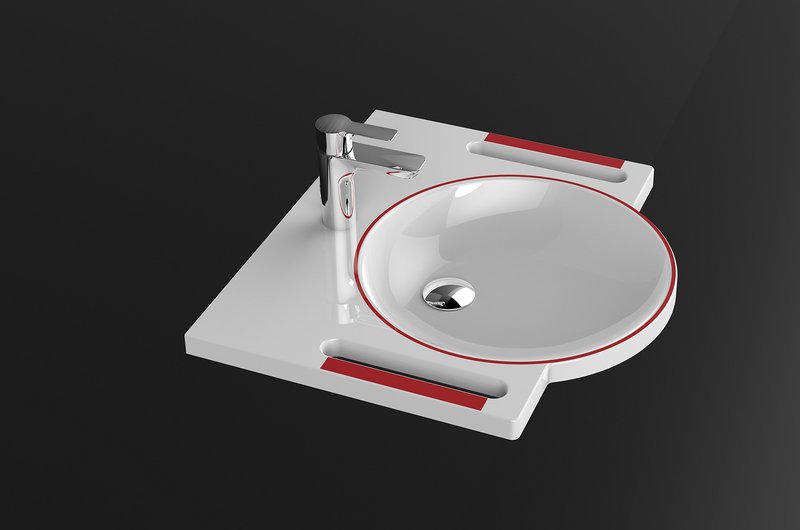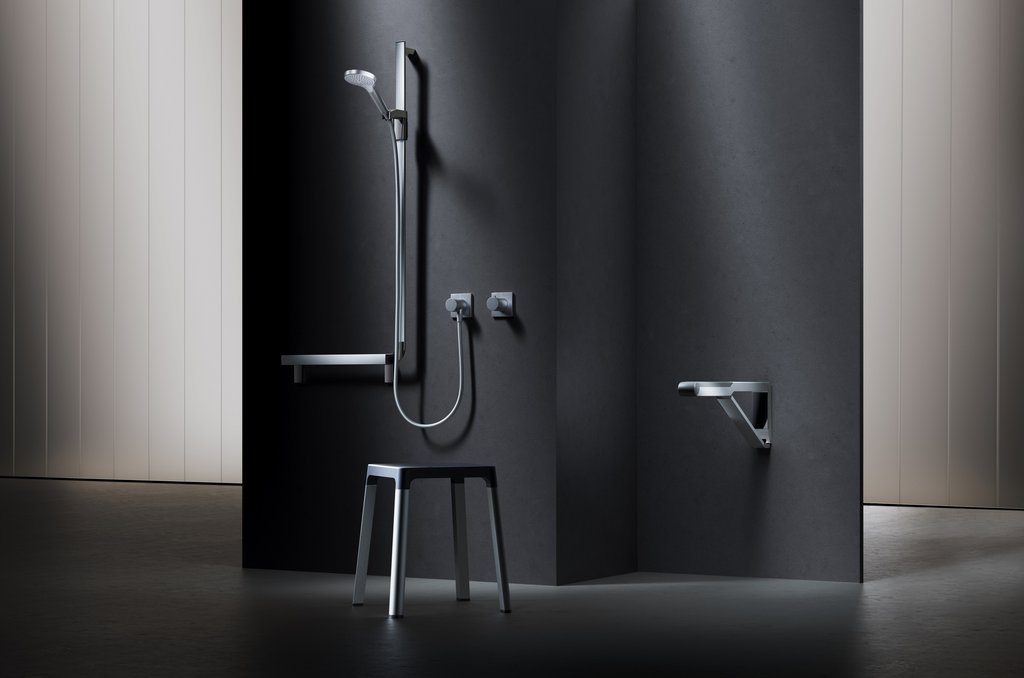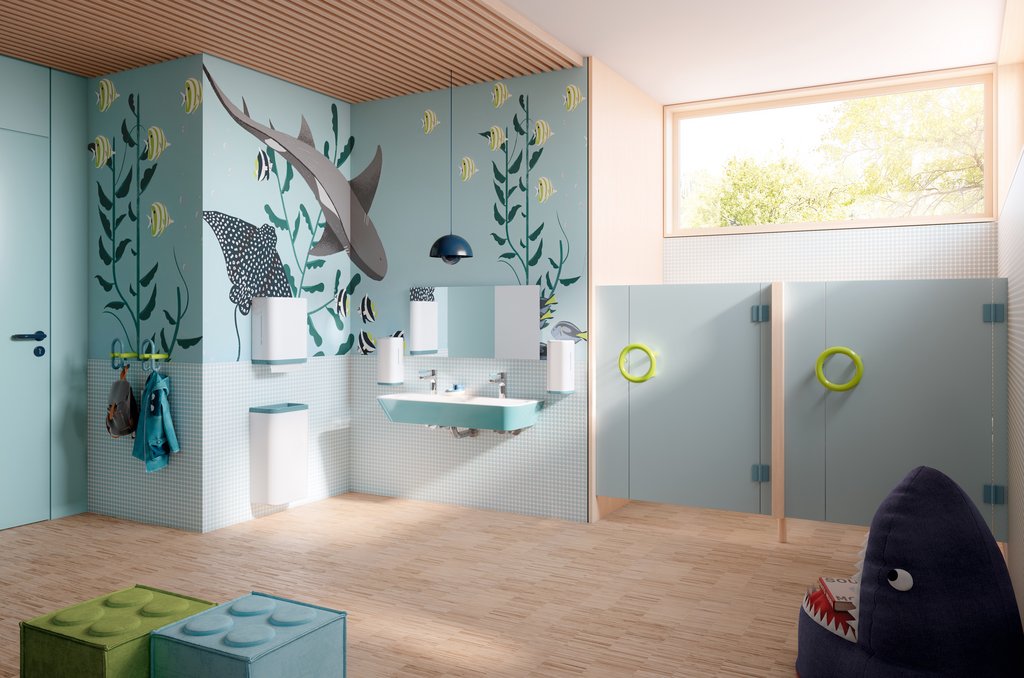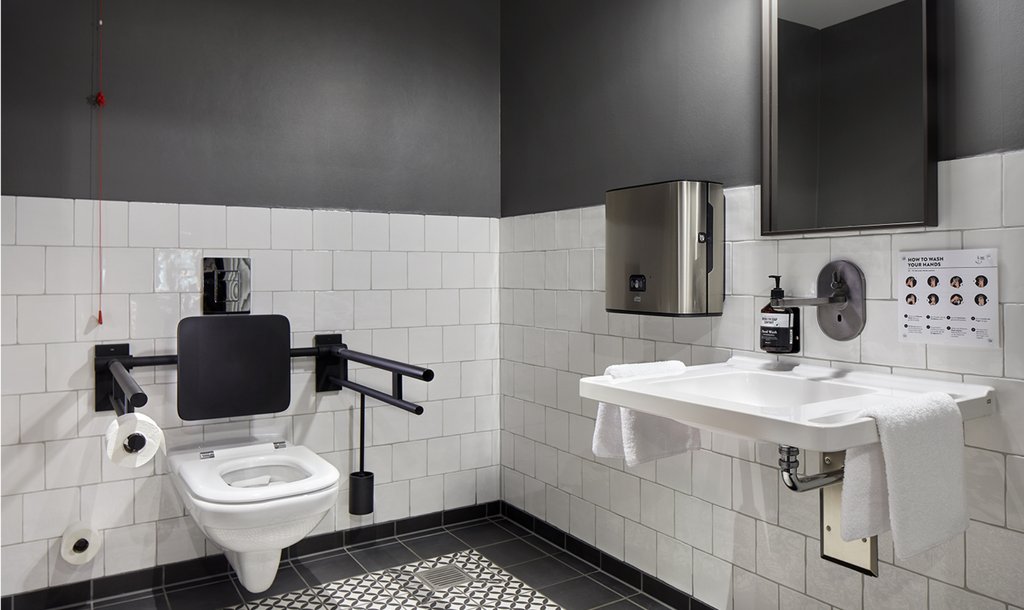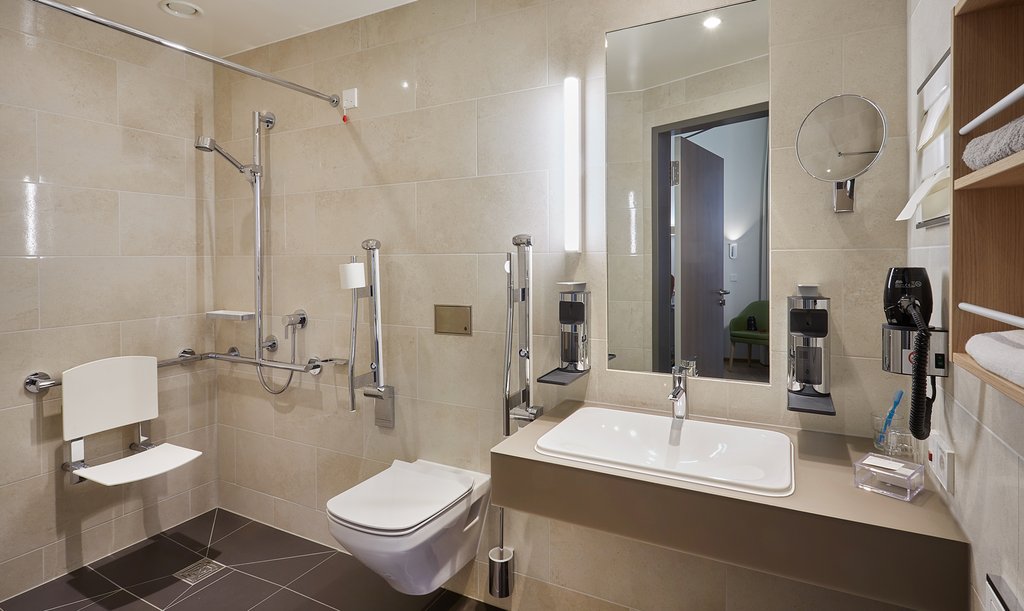Interview: Functional aspects of the coloured design of the Hewi washbasin

In the interview, architect Dr. Birgit Dietz explains the background thoughts in the development of the age and dementia-sensitive washbasin, which she designed together with Hewi. She is a visiting lecturer in the Hospital and Health Sector Building department of Munich's Technical University and has her own architectural firm in Bamberg.
Hewi offers an accessible washbasin, which has coloured markings. What is the function of the coloured design?
At least 80% of an adult's perception of their environment occurs through eeing. Yet as people get older they suffer from diverse restrictions which make correct perception of the environment and therefore orientation more difficult. If we can create the conditions so that the user does not have the impression that they are like a skier in the fog and are able to recognise the washbasin, they will more easily find their way around. They will also use the marked gripping slots, the risk of falling can also be reduced.
Was the colour chosen deliberately?
Yes! Protein deposits cause turbidity of the lens in old people. This causes certain spectral components of light to be scattered diffusely. They can no long freely reach the retina without obstruction. Colour contrasts, especially in the blue-green range, can no longer be perceived in a differentiated way, as the transmission properties of the lens reduces severely within the range of short-wave light. Red is identified the longest and also has a prompting character.
Has it been tested whether people who suffer from dementia are guided by the coloured markings or rather whether their independence is promoted?
Yes. Utility model protection has now even been granted for it!
One of the approaches to dealing with people who suffer from dementia is "milieu" design, or design of the physical environment in which they live. This approach designs the surroundings of the sufferer to be how they usually were when they were young. You pursue a functional approach. How does it differ from milieu design?
We want to address all the senses in order to enable the sufferer's perception of their environment to be as correct as possible. In my opinion it is not so important to develop the impression of a home if that's what you mean. Instead the aim is for sufferers to maintain their competencies and to minimise the feeling of uncertainty and helplessness. Taken further, milieu design means adapting the material and social environment to the altered perception and skills. It tries to remove sources of excessive demands, where the sufferer can't cope; i.e. it has a similar objective.
You teach hospital and health sector building at the TUM and have carried out research into age and dementia-sensitive architecture for some years now. What are the focal points of your research projects?
Basically the aim is to support competencies by using all senses, in order to avoid the feeling of incompetency as far as we possibly can. This is the only way to minimise the experience of helplessness and therefore to reduce fear and resulting reactions such as aggression, running away, hiding and much more as much as we can. The diminishing of skills on the one hand should therefore trigger efforts on the other hand to make the environment as comprehensible and safe as possible – this washbasin can contribute towards this.
Further information:
